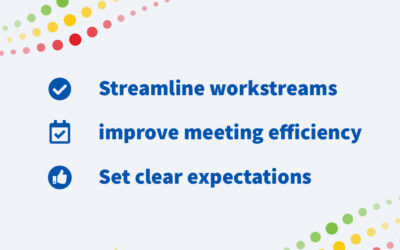
Educators have never faced the kind of uncertainty we are facing this school year.
Whether in-school, online or some combination of both, school leaders have to track the quality of instruction and the impact of their efforts, no matter what the mode of instruction.
And they’ll be met by a host of related issues: The percentage of “At Risk” students has likely increased, given that many schools lost 2- 3 months of crucial opportunities to close academic gaps. Teachers were thrust into the unknown and almost certainly went into this year unequipped to differentiate instruction in a virtual setting – and keep pace with their scope and sequences.
So the questions are many:
- What happens if school leaders are required to shift between virtual, in-person and hybrid or “flexible schedule” versions of doing school this Fall?
- What are the implications on progress monitoring efforts?
- How will your previous plans to implement PD cycles (ex. Establish robust professional learning communities, improve protocols and follow up for instructional rounds or peer observations) feed into improving the quality of teaching?
Candidly, state mandated student growth requirements will not be adjusted or placed into perpetual forbearance. All instructional leaders still have a call and commitment to ensure equitable education and opportunity for all students. And the principals will still be holding the baton regardless of any resources and allowances issued by the central offices.
So how can Educators better meet all this uncertainty?
Here is a simple framework and a great place to start:
- Create a system to monitor and manage both instructional actions and outcomes: You can think of, and call “actions”, initiatives, projects or anything else, but actions are the things the adults are doing to drive student engagement and learning. Outcomes traditionally have been summative and infrequent – but in this shifting paradigm the outcomes we monitor need to more intentionally include formative measures.
- Get over the idea that measurement must be quantitative: Measurement is about reducing uncertainty, which does not always mean giving something a number. The need to quantify can lead to false specificity and the paralysis of “how will we measure that”. When deciding whether or not to take an umbrella you don’t need to know the exact volume of precipitation, just that it is raining. Same thing with students, you don’t need to know that Billy is engaged at 20% or 30%, and you certainly don’t need to take the time to litigate the math – you just need to know that “Billy is not very engaged” so that you can take action.
- Flip your meetings: Getting groups of people in small rooms for information that they could have gotten from an email doesn’t make a lot of sense right now (and we don’t think it ever really did). If you haven’t already now is the time to flip your meetings. Just like in a flipped classroom, things that can be read ahead of time should be read ahead of time so that the conversation can focus on group collaboration and problem solving. This means that individual’s updates need to be provided before the meeting and the facilitator needs to use those updates to identify a series of questions and problems for the team to address. Flipped meetings go from being “sit-and-get updates” to engaging working sessions.
RespondAbility Quick Overview and Explainer Video
How can you handle this new way of thinking about project and progress management?
RespondAbility is an educational leadership system that empowers you to execute without drama, no matter the situation . It allows you and your team to set priorities, assign roles and responsibilities, track projects and measure progress against student outcomes, in a frictionless way. It works as effectively in-school or remotely – empowering your team to maximize team time, access crucial information as it evolves and keep everyone moving in the direction of student success. And since it’s agnostic with regard to in-school or remote participation, it can act as “connective tissue” that keeps you and your teams on-task and on-time as you move between instructional modes.
Success Story
High School Principal, Chad Thomas, explains the multiple applications of RespondAbility. He explains how it is leveraged to communicate with his superiors and how he leverages the software to keep his team on track and focused on education their students.
Use Case
This video case study explains how you can help keep multiple teams and projects on track with less time in meetings.




